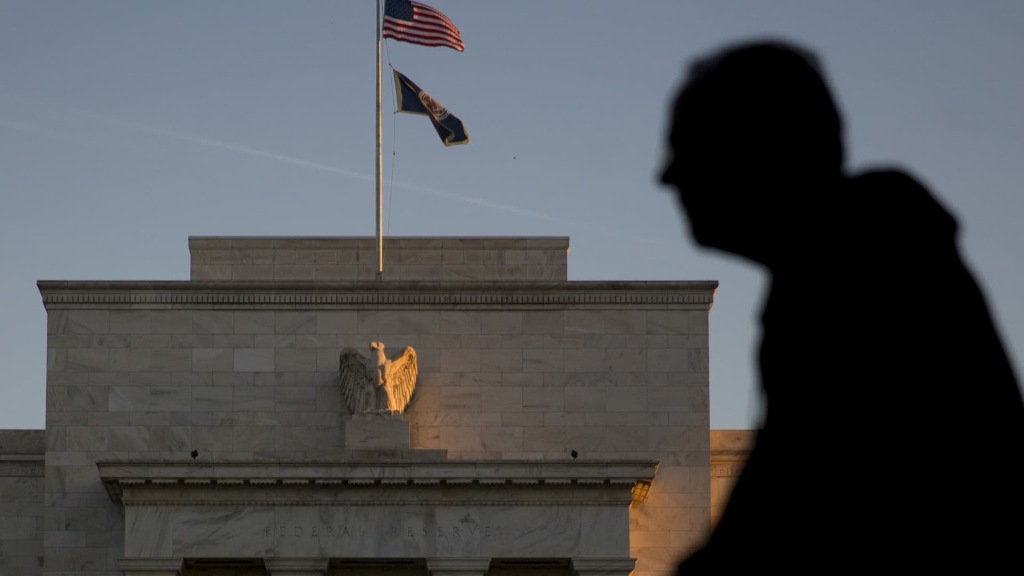Leading the Federal Reserve is complicated enough, but the upcoming chair will also have to contend with significant credibility challenges due to President Donald Trump’s intensified push for direct influence over monetary policy decisions.
The individual selected for this pivotal role may find themselves viewed as merely an extension of Trump’s objectives regarding interest rates, potentially undermining the Fed’s longstanding reputation for political neutrality.
Reports suggest that Trump is contemplating the establishment of a “shadow chair” to exert more control in upcoming months, aiming to influence the Fed into lowering rates before Jerome Powell transitions out of his role next year.
This potential move raises numerous complicated issues.
The logistics of such an arrangement appear awkward, and it poses considerable risks for both the integrity of the Fed and for the financial markets that depend on unbiased, data-driven decision-making.
Dario Perkins, a senior European economist at TS Lombard, expressed concern, stating in a recent note titled “Can We Trust the Next Fed Chair?” that the thought of the Fed “losing independence” and entering a new era of “fiscal dominance” has unsettled investors. Former President Trump’s insistence that lower rates could alleviate taxpayer burdens by reducing debt-servicing costs adds to these worries.
While Fed officials traditionally operate under a dual mandate focused on ensuring stable inflation and full employment, Trump’s demands diverge from this established framework.
Trump has been vocal in pressuring Powell and other Federal Open Market Committee members to implement rate cuts aimed at alleviating the government’s rising debt. He argues that aggressive reductions, potentially saving taxpayers up to $800 billion, are necessary, given that the current overnight funds rate sits at 4.33%.
Powell and his predecessors have consistently maintained that public fiscal conditions do not influence rate-setting decisions. Steering away from these traditional parameters could significantly impact the credibility of the next Fed chair.
Concerns and Considerations
According to Perkins, the real casualty in this ongoing situation may not be Jay Powell, but rather his successor, whose credibility is already under scrutiny. With no candidate nominated yet, doubts circulate regarding the integrity of whoever ultimately assumes the role, raising concerns over potential prior agreements to lower rates.
However, some experts indicate that there could be strategic advantages for Trump in naming the next Fed chair earlier than expected. Powell’s term as chair concludes in May 2026, and suggesting a replacement well ahead of this date could facilitate the Senate confirmation process and prepare the nominee for the position’s complexities.
Despite this, Trump’s proposal for a “shadow chair” diverges from typical practices. Such an individual, in alignment with the administration’s public rhetoric, may directly contradict Powell’s decisions on rate cuts, creating further friction.
Finding a suitable candidate for a role that potentially invites criticism may prove challenging.
Lev Menand, an associate professor at Columbia Law School, emphasized the inherent risks of such early nominations, noting that the implications could range from reputational damage to the possibility of the nomination being revoked altogether. He noted, “There’s nothing good about being nominated far out in advance and being expected to serve as a shadow Fed chair.”
Market Reactions and Implications
Names such as Treasury Secretary Scott Bessent are being circulated as possible replacements for Powell, among others. Bessent previously remarked that an early Fed nomination could introduce an alternative monetary policy perspective to the market, implying that Powell’s influence would diminish.
The market reaction to such a change remains uncertain. Wall Street generally detests unpredictability, especially regarding sensitive policy decisions. When the Fed last lowered rates in late 2024, markets reacted positively, with a rise in stock prices coupled with increased Treasury yields and a decline in the dollar’s value. However, the extent of the cuts Trump is advocating—potentially reaching two percentage points or more—could reignite inflation fears and exacerbate yield increases.
A case could be made for nominating the next Fed chair early, but establishing their role as an active voice on monetary policy over an extended period risks confusion within the market, hindering the Fed’s efforts to manage rate expectations, according to Krishna Guha, head of global policy and central bank strategy at Evercore ISI.
As Trump continues to pursue his objectives for lower rates, he faces a set of logistical challenges.
Future of Rate Cuts Uncertain
Currently, there is only one upcoming vacancy on the Federal Reserve Board of Governors, with Adriana Kugler’s term expiring at the end of January 2026. Although Powell’s term ends in May 2026, he could remain on the Board until 2028, which historically, Fed chairs typically conclude their tenure upon leaving the chair position. If Powell chooses to remain, Trump would be compelled to nominate a sitting governor as his successor, eliminating notable candidates such as Bessent and former Governor Kevin Warsh.
Furthermore, the chair occupies just one of twelve votes on the Federal Open Market Committee. Despite varying opinions on the timeline for rate cuts among policymakers, none have endorsed the drastic reductions that Trump is advocating.
Investors will gain further insights into the Fed’s stance when the minutes from the June FOMC meeting are made public on Wednesday.
Menand remarked on the unprecedented nature of these developments, stating that depending on how the situation unfolds, it may significantly affect market expectations and the dynamics at play in the fall.
While markets anticipate another round of rate cuts to begin in September, the trajectory from that point forward remains ambiguous. Should Trump proceed with naming a shadow chair in the autumn, it introduces risks of market instability and complications for the chosen individual.
“Depending on who it is, it could either have minimal impact on Powell’s governance or be significantly disruptive,” Menand stated. “The ramifications of naming someone in advance would hinge on specific details.”


























